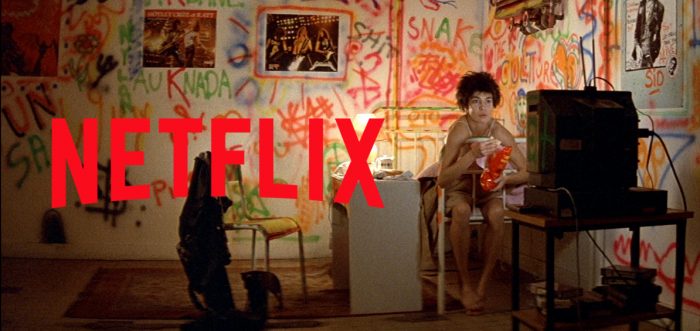After years of international success, Netflix finally launched its streaming service in Australia and New Zealand on Tuesday, boasting an eclectic (if relatively small) library of titles. Much of that has got to do with rival streaming services, like Channel Nine & Fairfax’s Stan, Foxtel & Channel Seven’s Play, Quickflix and the free service SBS OnDemand. That said, it looks like Netflix will be using this small library sample size to see what kind of films and television shows Australian and New Zealand audiences want to see more of and, as is the way with all new Netflix launches, the library will expand and change quite considerably in the coming months.
For those who haven’t dabbled in either online streaming services or circumnavigating geoblocking before, the launch of Netflix locally sees an overwhelming amount of content to sift through. In light of that, we asked some of our writers for their recommendations of films worth watching right now on Netflix, ranging from broad comedies to festival favourites to splatter-filled horror.
Conor Bateman: A large portion of the film content that Netflix offers, in any region really, is centred around films released in the last decade rather than very new releases. In essence, it’s about forcing (or enticing) catch-up viewings, films you couldn’t make it to in the cinema or more populist festival fare that never quite made it to cinemas here in Australia. The focus on that is actually also reflected in the relatively sparse offerings of classic and foreign cinema in the Netflix ANZ line-up, there’s quite a clear target audience for the service; in rivalling Foxtel et al they want to attract families, hence the lack of many films other regions of Netflix have. That said, there’s still a lot on offer in the library we have so far. Two films I’d eagerly recommend for watching are both comedic in nature, though are much more than their punchlines. Greg Mottola’s follow-up to Superbad, the semi-autobiographical Adventureland, brings nuance and rich humour to the ‘delayed coming-of-age’ subgenre (Netflix, take note), following a group of twenty-somethings stuck working in an amusement park over summer. Jesse Eisenberg and Kristen Stewart lead a fantastic ensemble cast — Bill Hader (who pretty much steals the film), Kristen Wiig, Martin Star, Ryan Reynolds — in what is a more languid and sardonic take on the teen comedy; think of it as a vastly more cynical The Way, Way Back. In a sense, it’s a comfort film in the same way Baumbach’s Kicking and Screaming is; snappy dialogue, great use of pop songs (as in Mauvais Sang and Frances Ha, David Bowie’s “Modern Love” makes an appearance) and endless rewatchability.
Pablo Larrain’s No is another film well worth seeking out, chronicling the end of the Pinochet dictatorship in Chile through the prism of advertising. The film is about the 1988 plebiscite which would end the Pinochet reign, and we follow creatives in the advertising world (in particular Gael García Bernal’s Rene) who were tasked with promoting the ‘No’ campaign, that being the campaign to remove Pinochet from office in favour of democratic elections. No is the final part of Larrain’s unintentional ‘Pinochet Trilogy’, but is by far the most upbeat of the three films. Sergio Armstrong’s bright and goregous cinematography, shot on antiquated Sony U-Matic tape and with a 4:3 aspect ratio, perfectly places the film in its contextual era, the playful shift from the narrative of the film and the advertisements created within it acts to build a metatextual idea of fictititious or embellished history, something Larrain acknowledged in response to criticisms of his film overlooking grassroots campaigning. Another reason No is worth watching is that Larrain’s latest feature, The Club, won the Jury Grand Prix at this year’s Berlinale, and should hopefully be screehning at either Sydney FIlm Festival or Melbourne International Film Festival (or both!) this year. He’s no stranger to award success either, No was nominated for the Best Foreign Language Film Oscar in in 2013 and won the Art Cinema Award at Cannes in 2012.
Dominic Barlow: With Lucy relegated to ad hoc rentals on the Australian iTunes store, fans of Luc Besson’s brand of madness would do well to seek out La Femme Nikita, an early film of his with the hard-bitten glamour of the cinema du look movement he sprang from. Unlike the Scarlett Johansson vehicle he would make fourteen years later, this spurns drug-enabled euphoria in favour of a different kind of fantasy, where drug addict Nikita (Anne Parillaud) is granted a fake death in order to train up as an assassin. It grabs for a final-third romance, but its visual sleekness and audacious female empowerment is what’s more memorable, for better or worse.
For a less voyeuristic and deeper exploration of femininity, Sally Potter’s adaptation of Virginia Woolf’s biographical novel Orlando does the trick. Tilda Swinton plays the titular immortal character, from a teenage boy in the Queen’s court to a matriarch publishing work in 90s England, mending the transitions by addressing the camera and revelling in the dry wit of Potter’s script. More than just clever dialogue, it knows how to translate a self-reflexive book into cinematic language, and is absolutely the kind of niche revelation that a context like Netflix might be enough to cultivate.
But if Netflix is, as Conor mentions, the ideal place to catch mainstream fare we passed on in cinemas, than nothing suits it better than Muppets Most Wanted. Waning next to the jubilant 2011 series restart, it tries and fails to capture the meta energy of Jim Henson’s caper comedies, but finds enough bizarre cameos and moments to make a lazy viewing rewarding for pop-culture magpies. Brett McKenzie’s songs are far and away the highlight, sometimes shot very deliberately like those in Flight of the Conchords (which director James Bobin worked on) and featuring perhaps the only non-David Brent musical performance by Ricky Gervais, who also happens to be the face of Netflix and Optus’ partnership. The mistaken-identity plot can be taken or left, since the film often feels the same way, but the odd details throughout might be enough for a concurrent live-Tweeting.
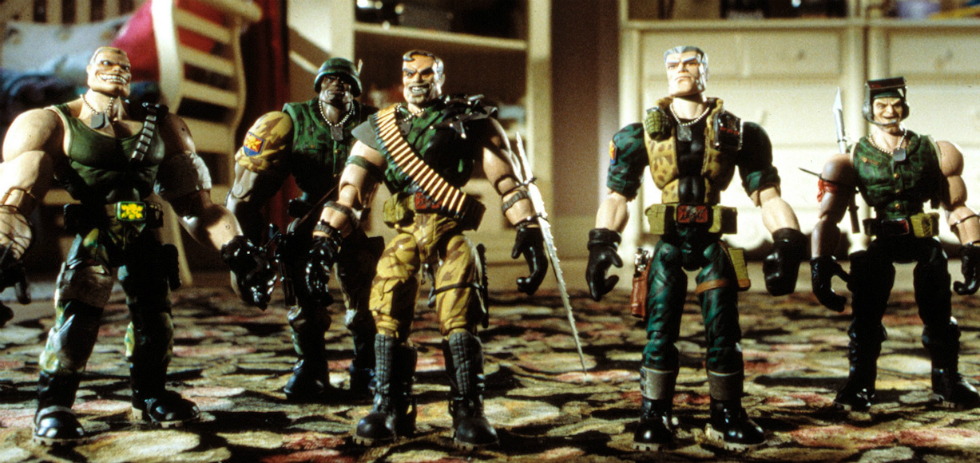
Luke Goodsell: One of the pleasures of Netflix is encountering films that, for whatever reason, slipped through the cracks: forgotten gems, theatrical blips, less-talked-about works in the canons of certain directors. Scanning through Netflix’s initial serving, I’m immediately struck by a film that satisfies all these criteria: Joe Dante’s Small Soldiers. Release in 1998, it’s arguably the director’s last great film (though Looney Tunes has its boosters), but even so it didn’t have much of an impact commercially – and certainly no-one’s discussing it in the same breath as, say, Gremlins. That’s a shame, because like his most famous film, Small Soldiers is another subversive, demented theme park of a movie that spares its audience little nastiness in the pursuit of entertainment. Just as Gremlins flipped E.T. on its head, Soldiers reimagines the anthropomorphic cuteness of Pixar’s Toy Story by having a kid’s plastic action figures wage pitch battle in a suburban house, with frequently amusing disregard for human life. Seeing Kirsten Dunst’s character attacked by a legion of deranged Barbie dolls remains one of the great unsung moments in ‘family’ movies. Small Soldiers isn’t quite a match for the mayhem of Gremlins 2, but it’s not far off, either.
Dante’s PG-13 spirit was resurrected with glee in Monster House, but first-time wunderkind Gil Kenan all but dropped off the map with his follow-up City of Ember, which is available to watch on Netflix. The story of two kids trying to save their underground city from a catastrophic power meltdown, it’s no overlooked classic, but it is a curiosity – a movie more attentive to its intricate, overwhelming industrial design than its rather rote story. It also features Bill Murray as the cape-wearing mayor, which is never a bad thing.
Much more successful, but rarely celebrated, is Drew Barrymore’s directing debut Whip It, which came and went without much fuss a few years back – presumably because the market for bratty, all-girl roller-derby pictures wasn’t, unsurprisingly, a large one. This is a cool little film, though, light on narrative but big on energy and atmosphere, with a punchy rhythm and a lead performance from Ellen Page that proved her smarts outside of that other loudmouth teen movie. As a fan of the rollerskating subgenre, such as it is, I loved the way this riffed on the toughness of cult films like The Unholy Rollers.
Also on Netflix – since I seem to have inadvertently started a movies-for-12-year-olds thread – is J.J. Abrams’ dial-a-Spielberg kids sci-fi Super 8. While this arrived with the requisite Abrams noise at the time, it feels less talked about than, say, his excursions into Star Trek. And with all eyes focused on the director’s Star Wars this year, Super 8 is a good way to familiarize yourself with the positive aspects of Abrams’ skill set. His direction of the young actors here is pretty remarkable (it helps that one of them is Elle Fanning, of course), and if he can get even halfway as good performances from his Star Wars cast he’ll already have made a better film than Lucas’ prequels. Plus, Super 8 also demonstrates his uncanny ability to mimic, if not quite inhabit, another director’s house style – and sometimes that’s just what a franchise movie needs.
Brad Mariano: A rogue suggestion – in the annals of sequels, few second efforts are quite as bizarre as Robocop 2. A benign supporting character from the first film is inexplicably presented as a megalomaniac capitalist supervillain, there’s an even more hilarious/egregious use of stop-motion than the first film, the primary antagonist is a foul-mouthed child, and the film veers between the satirical tone of the original and moments of straight-out Cronenbergian body horror. The last time Peter Weller would don the iconic suit, Robocop 2 is so strange and uneven that it works in spite of itself as a delirious take on the very notion of sequels (there is literally a model robot called “Robocop 2”). And in the most 90s promotional tactic ever, Robocop actually showed up at a WCW wrestling event, which gets at the kitsch intentions of the film better than any revisionist written tribute I could muster up.
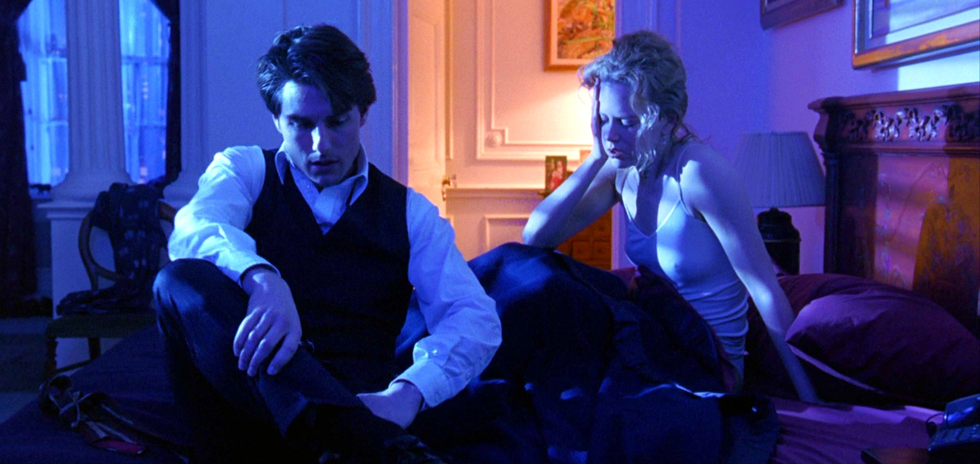
Jess Ellicott: There’s been little mention so far of some of the straight-up classics in the lineup, which can be hard to spot amid the sea of more recent titles. Kubrick’s little ditty from 1999, Eyes Wide Shut, starring young upstarts Tom Cruise and Nicole Kidman, is a great addition and a personal favourite that definitely pays revisiting. It’s fascinating on so many levels – its production history, the brilliant adaptation of Schnitzler’s Traumnovelle, the pseudo-documentary elements of its larger-than-life casting – that it’s really hard to believe how much it was maligned at the time of its release.
If you feel like something a little lighter, another classic that’s nice to see make it to our content-impoverished shores is Whit Stillman’s infinitely watchable and extremely worthwhile Metropolitan (1990). It’s populated by sickeningly bourgeois, really quite horrible characters who you can’t help but be both fascinated and appalled by, with Stillman writing this particular breed of New Yorkers better than just about anyone. Despite its Criterion release, it hasn’t quite broached the mainstream as much as say Woody Allen’s Manhattan, which is a real shame as it’s easily comparable in calibre.
Felix Hubble: Although their Horror selection is fairly sparse at this point – it’s pretty clear that Netflix are not targeting the under-25 demographic too strongly at launch – there are a fair few (contemporary) gems and guilty pleasures in the mix. Special mention has to go to the inclusion of James Wan’s Insidious and The Conjuring. While the latter made waves in critical circles, I maintain that the former is one of the scariest films I have seen, a family-friendly outing (if you’re into terrifying your kids) that harks back to the Poltergeists of yesteryear with style and vigour. I also have to plug the inclusion of The Host, Monsters, and John Dies at the End fulfilling the services ‘much-loved-foreign’, ‘actually-fantastic-indie’, and ‘the-weirdest-and-possibly-best-film-on-the-service’ quotas respectively in their sparse, 50-film selection; all three are great for various reasons and well worth a look on a lazy Sunday.
I have to toss in a recommendation towards the not-amazing-but-still-way-too-overlooked slice of early-2000s-spookfest-throwback fun that is Final Destination 5, one of the three Final Destination flicks on offer. The fifth, although no masterpiece, perfects the series and serves as a template for what all the other instalments really should have been. If you’re not familiar with the series, each film follows a group of teenagers who cheat death when one of their pals has a gruesome premonition, and are then killed off one by one by an omnipotent grim reaper in increasingly elaborate ways. Although the dialogue and performances are never stellar, the deaths serve as some of the most iconic scenes of the mid-naughties. Despite this, the series also had its fair share of plonkers and the major stumbling block in the series was always in its cinematic execution of Death’s multifaceted schemes. Fortunately, this was finally perfected in the last instalment of the series – every grisly demise plays out like a Rube Goldberg-influenced magic trick; we are presented with an array of possible execution methods in each sequence, toying with the audience through ever-increasing dramatic tension, but every death always comes through the most obvious means. This final instalment in the series will work best if you’ve seen the first, subverting and satirizing the series while paying tribute to it, with a scattering of some pretty great references to previous instalments throughout. The other semi-decent one on the service is Final Destination 3, a film also known as that one that you’ve probably seen but can’t remember the number of, with the rollercoaster gone wrong, a tanning bed which serves as a lazy excuse for gratuitous nudity and gore, a nail gun that functions in an impossible fashion, and a host of characters I can’t remember. There is also, of course, the terrible fourth instalment The Final Destination, easily the worst in the series and a film that should be skipped at all costs.
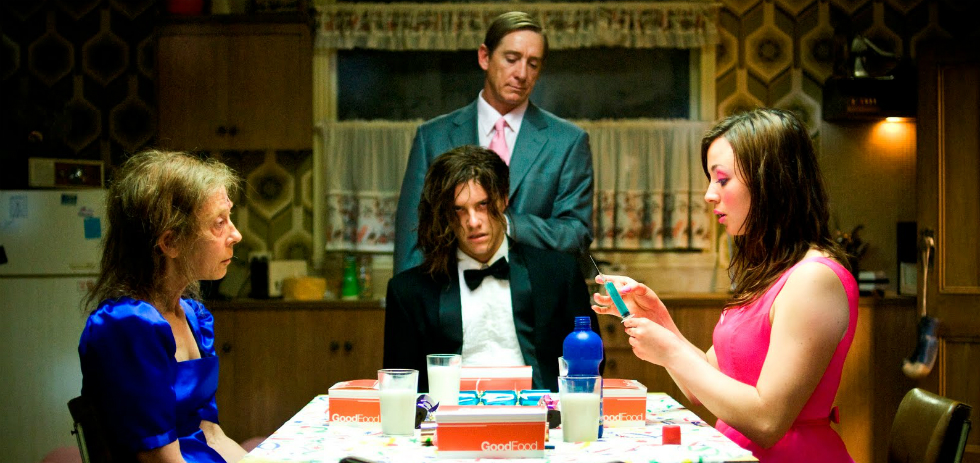
Another nice addition is one of the best Australian films to come out in the last decade, Sean Byrne’s future classic The Loved Ones. Although after a recent rewatch it became clear that it wasn’t quite deserving of the pedestal I placed it on after first watch as a teenager (unfortunately no “You Have to See… The Loved Ones” is forthcoming), the film is a vibrant, refreshing, and exciting departure from the cinematic sludge that often comes out of the Australian horror landscape, and holds its own against all other Screen Australia productions of recent years. The film follows a suicidal, deathcore-appreciating, pretty-boy teen who gets kidnapped and tortured by the prom date from hell and her psychopathic father after he rejects her advances in the lead-up to formal night. The film is dark, sick, twisted and brutally fun, the characters are likeable and relatable (the teens actually look like teens, the adults like adults), and the dialogue is realistic where it needs to be and cartoonishly outlandish when necessary. The film made waves in International horror circles upon release and holds one of the highest Rotten Tomatoes scores you’ll see for an Australian film regardless of genre (98%), so it is a bit of a shame it has been a bit overlooked domestically. Hopefully its addition to our incarnation of Netflix will shine a much deserved spotlight on it and lead a few more Aussies in its direction.
Ivan Čerečina: It’s great to see Netflix include Wake in Fright in their lineup, continuing the support the film has received since its high-profile restoration in 2009 where it played in Cannes Classics section at Scorsese’s behest. The film’s reputation as a Great Australian Film has been assured by this recent revival, but the “Australian” part of this label strikes me as being a little off. Directed by Ted Kotcheff (a Canadian), who would later go on to make both Rambo: First Blood and Weekend at Bernie’s (!), Wake in Fright is best viewed as a deeply unsettling outsider’s view of the country. I recently spoke to a French friend who had just watched the film for the first time; he described it as every Australian stereotype he could think of played out in the worst, most nightmarish scenario possible, which is pretty spot on. Games of two-up, roo-killing, and stupid quantities of beer all blend together to make a genuinely frightening anti-Tourism Australia fever dream. Bad, bad vibes – great film.
If you’re still not feeling 100% perturbed after that, how about following it up with David Lynch’s Twin Peaks: Fire Walk With Me? The director’s prequel to the cult TV series is far more frightening than anything that made it into the show, with Lynch jettisoning plot comprehensibility in favour of abstract, creepy atmospherics. In 1992, Lynch was given funding by a French production company to make a film based on the TV series, but had trouble getting his cast back together due to scheduling conflicts and some general reticence after the show’s up and down second season. As a result, some of the show’s most likeable characters are either far less prominent (Dale Cooper), played by a different actor (Donna, with Moira Kelly conspicuously replacing Lara Flynn Boyle) or completely absent (Audrey Horne). This frees Lynch up to liberally reinterpret the show’s dynamic and the narrative threads that loosely held it together. What results is a radical reworking of the show’s familiar reference points, an artist’s sketch produced after the painting has been completed. It might not produce the same oddly affecting moments of pathos as in the TV series, but it’s still damn fine viewing.
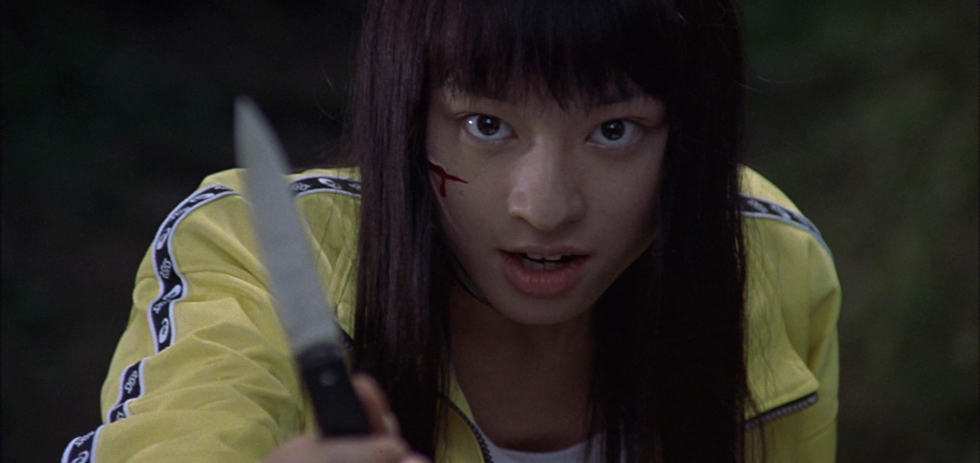
Jeremy Elphick: It’s not exactly in line with most of my favourite films, but in my opinion Battle Royale is an absolute opus of modern Japanese cinema. In the decade and a half since, the influence of Fukasaku’s adaption on the action thriller within Japan is completely unmatched. If you’ve somehow managed to avoid hearing about the film: it spends the first minutes establishing itself as a sombre drama before quickly taking a turn as a mourning student somehow ends up in a situation where he is forced to battle every single student in his class to the death. There’s a lot of subtle and not-so-subtle political implications raised towards the naturalisation of violence and the militaristic nature of hyper-organisation in the stricter schooling systems in the country, but above all Battle Royale most often finds itself as a thrillingly mindless and fast-paced tribute to more the more spectacle-laden action films.
On the other hand, there’s Paris, Texas. Wim Wenders released this pleasant gem of a film before most what I’d argue are his two best pieces (His tale of immorality in Wings of Desire and his study of fashion designer Yohji Yamamoto in Notebook on Cities and Clothes) but Paris, Texas is definitely a close third for me. I think it’s also one of the best places to start with a director like Wenders, who has four decades of work to his name, as one of his more instantly palatable and charming films. Not the most challenging work he’s ever done by miles, but definitely worth a watch.
Virat Nehru: So, I ventured into Netflix’s foreign-language section and found quite a healthy infusion of Hindi films to binge on. A recurring motif of the way we’ve come to process this Netflix phenomenon is that it is this treasure of trove of content that’s otherwise slipped through the cracks. When you look at the contemporary state of Hindi cinema, the situation isn’t as sanguine. Almost all the Hindi films in the Australian library of Netflix come from Yash Raj Films, which is perhaps the most globally accessible production house in terms of Hindi films. Essentially, when you think of contemporary ‘Bollywood’ at its stereotypical and reductive core – with all the big dance numbers, family sagas, and eternal love stories – you are thinking of Yash Raj Films. If there is a mythical production house hierarchy in Hindi films, then YRF sits right at the top. And retrospectively, I think it deserves a lot of plaudits. When the founding director Yash Chopra was at his creative peak, YRF was responsible for some exceptionally poetic films that will be etched in audiences’ memories. But it’s not the case anymore So, am I going to recommend a typical Bollywood love saga for you all to enjoy? Of course not! Because even a commercially driven Hindi film production line such as YRF sometimes slips up and actually makes compelling cinema – just to surprise its intended audience. These three films are little gems in a plethora of clichéd Hindi film narratives that you should most definitely catch:
Where there is YRF, there is Shahrukh Khan. Ever since the late Yash Chopra took a liking for this dishevelled ‘boy-next-door’ in the 1990s, Shahrukh has not looked back. Establishing his career with a few terrific antagonistic performances, he went on to cement his legacy in Hindi cinema as the ‘king of romance’. However, Chak De! India took me by surprise when it came out. I almost was unwilling to believe that it was a YRF film! It traces the trials and tribulations of the Indian National Women’s Hockey Team, led by a disgraced coach Kabir Khan (Khan in a career defining performance) who seeks redemption through the success of his team. By far, it is the best sports film in the history of Hindi cinema. The key social messages in the narrative – attitude towards women and women’s sports by the larger society, the prevalence of cricket at the expense of other sports in India, critique of Indian nationalism and parochialism through the sport of hockey – still remain unaddressed today as they were when the film came out. Shahrukh’s transformation into a disgruntled, but determined and ultimately inspiring coach hit the perfect notes. It also quite cleverly cashed in on the ongoing India-Australia cricket rivalry by transposing that rivalry onto the hockey field, for added emotional frenzy.
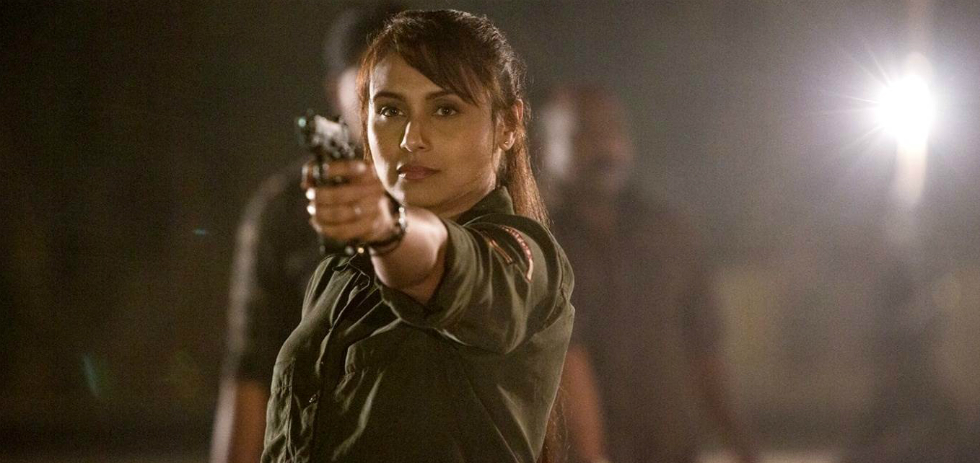
Hindi cinema has been obsessed with its larger than life male protagonists since the 1970s. It’s almost as if mainstream Hindi cinema has perfected the subliminal art form of repackaging their male celebrities into a vicarious form of existence for the audience’s viewing pleasure. However, recently, this obsession became unbearable as a string of male-centric, potentially sexist “action” films set the box-office cash registers ringing. Now, all the male celebrities were trying to ‘re-invent’ themselves as action heroes. Among all these crass action flicks came an extremely clever and subversive piece. Mardaani has Rani Mukerji in the lead, playing a fearless, one-woman army against the organised crime syndicate dealing with child labour and underage sex trade. It was an extremely effective and telling attempt to subvert the expected ‘one-man army’ trope. It’s also a small landmark film in terms of representation of women and female characters in mainstream Hindi cinema. Rani kicks some serious butt and doesn’t need to wear shapely leather tights ala Lara Croft while doing so. The Indian audience however, couldn’t accept such a “radical” interpretation of women on screen and the film didn’t succeed at the box-office. But it retained a soft spot in my heart.
Writer/director duo Jaideep Sahni and Shimit Amin reunited post the success of Chak De! to bring us Rocket Singh: Salesman of the Year, an extremely clever satire on the sales industry in India. Its understated tone and subtle representation of ethical dilemmas in the sales workforce make it one of the most effective satires in contemporary Hindi cinema. It tells the story of Harpreet Singh, who after getting disillusioned by the ideological approach of his company towards meeting sales targets, starts his own company – Rocket Sales Corporation – from within the company he works at! It’s a powerful and discursive commentary on the sales market in India and proves to be quite a reflective piece of cinema, retaining a dry sense of humour at its core.
Saro Lusty-Cavallari: While Netflix may be best known for Vitamin D deficient binge sessions of House of Cards and foisting strange Easy Rider sequels upon you, you do have the option of foregoing such bourgeois indulgences like “fun” and “enjoyment” and instead spending an hour with Michael Haneke. The icy Austrian master won his first Palme d’Or for the 2009 period film The White Ribbon and it’s arguably his most accessible and least divisive film. That said it’s far from a lark; the familiar glacial pace, opaque storytelling, unresolved narratives and unexpected bursts of violence are all here in this chilling origin story for the generation of Germans that would come of age in the 1930s. A black-and-white small town morality fable sounds comfortable enough, but this vivid cross-section of protestant fundamentalism and sexual repression is terrifyingly immediate. Another exciting find is the 2008 reconstruction of Fritz Lang’s Metropolis (I saw the film a year before the famous print was found and restored). Finding the Blu-Ray can be difficult and expensive so I’m looking forward to a quite literal rediscovery in high-definition.
